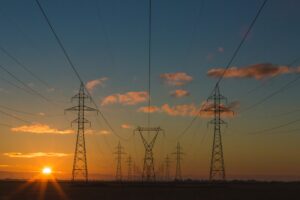In voice-over, words are brought to life through the power of sound, energy, and projection. Whether you’re narrating a documentary, voicing a character in an animated film, or recording a radio commercial, focusing on energy and projection is essential for delivering a compelling performance.
So, what exactly do we mean by energy and projection in voice-over, and how are they connected?

Understanding Energy:
Energy in voice-over is the life and emotion of your performance. It’s what gives your voice its texture, feeling, and presence – it’s what makes you engaging. Think of energy as the fuel that brings the words to life, drawing the listener into the narrative.
To utilize energy effectively, it’s important to connect with the material on a deeper level. Whether you’re conveying excitement, empathy, or urgency, your energy should align with the tone and message of the script. It’s helpful if you can tap into your own emotions and experiences to connect with the script with authenticity and sincerity. The listener connects with your energy just as much as they do with the words that you are saying. Get a feel for what each script is trying to make the audience feel and try to connect with those emotions as you’re reading.
Pacing also plays a role in maintaining energy throughout your performance. Varying the tempo and rhythm of your delivery keeps listeners on their toes, preventing monotony and increasing engagement. You can speed up to convey urgency or slow down to emphasize an important moment.
The Power of Projection:
Projection refers to the volume and clarity with which you deliver your lines. It’s about filling the space with your voice, ensuring that every word is heard with precision and impact. While energy draws listeners in, projection ensures that your message reaches them loud and clear.
Projection can increase your volume, but it’s important to note that projection is not just about being louder, it’s about being able to push air out smoothly and efficiently to amplify your vocals so that all of your sounds and words are heard clearly.
To control projection well, one must practice proper breath support and vocal technique. By utilizing your diaphragm and vocal cords effectively, you can produce a full-bodied sound that carries well and comes through the microphone rich and clear. This not only enhances the clarity of your voice but also conveys confidence. From whispering confessions to belting out battle cries, projection allows you to utilize vocal expression with clarity.
How Energy and Projection are Connected:
While energy and projection are distinct elements of vocal performance, they are also interconnected. Think of energy and projection as a musical instrument: Energy would be the type of instrument, the music, the tone of notes you play, driving the passion and emotion. Projection would be the air that you’re using to play the instrument – how loud or soft you play, how forceful you push out the air to play certain notes, and how you use it to vary the intensity of different musical sections. It acts as the channel through which that energy is communicated, amplifying its impact.
Without energy, projection becomes lifeless, lacking emotional depth and connection. Without projection, energy remains confined and muted, unable to be heard richly and clearly. It is the harmony of these two elements that elevates voice-over from just reading aloud to immersive storytelling, creating a connection between the performer and listener.
Check out our free PDF with pro tips from real working voice-over actors here!
Want to learn more about voiceover? Signup for our introductory VO webinar.




